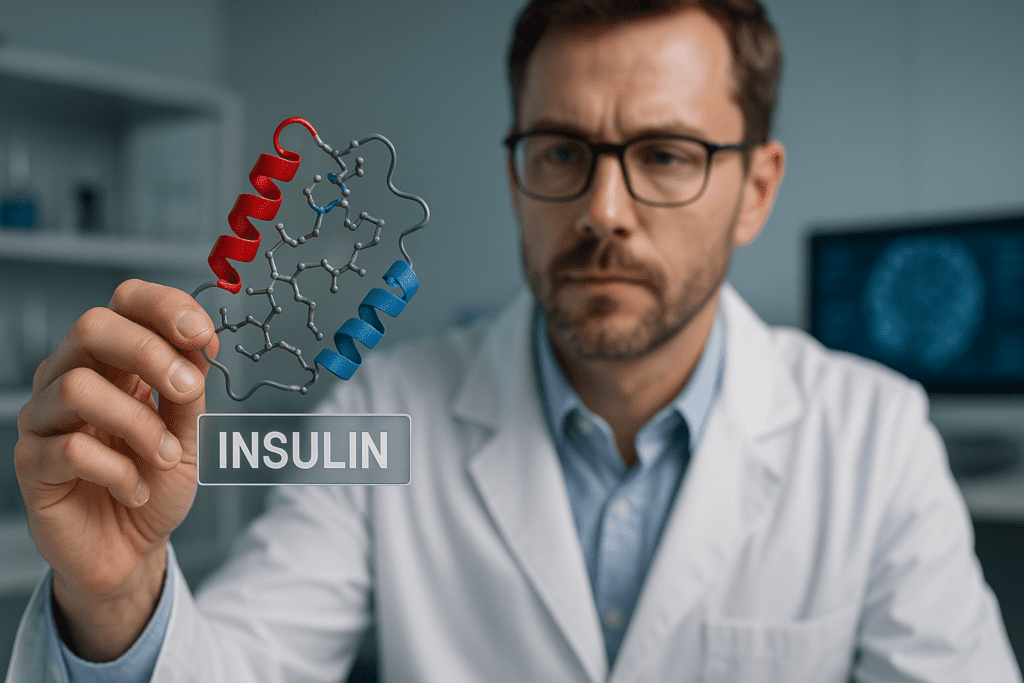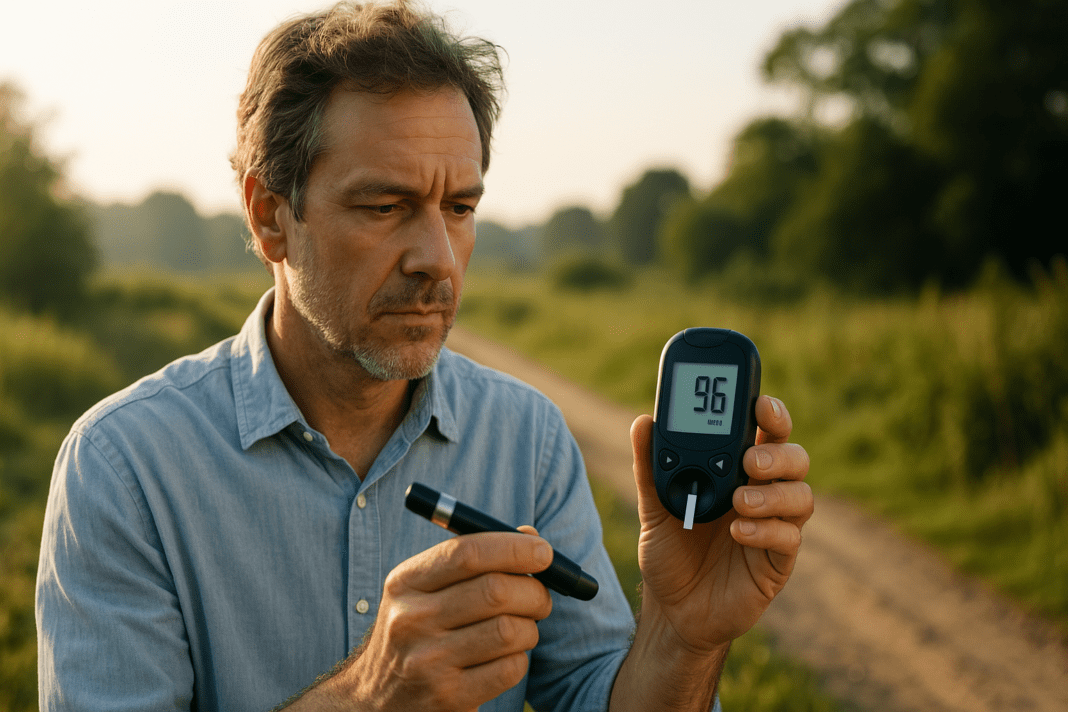Understanding the Growing Challenge of Type 2 Diabetes (NIDDM)
Type 2 diabetes, also known as non-insulin dependent diabetes mellitus (NIDDM), continues to pose an escalating global health burden. The rise in cases is closely tied to the surge in sedentary lifestyles, increasing obesity rates, and aging populations. According to the International Diabetes Federation, over 537 million adults were living with diabetes in 2021, and type 2 diabetes accounted for more than 90% of those cases. This chronic condition not only affects glucose metabolism but is also intricately linked to cardiovascular disease, kidney failure, vision loss, and other serious complications. Despite decades of research, many questions remain about how to best manage, prevent, and potentially reverse type 2 diabetes.
You may also like: Breakthroughs in Current Diabetes Research: What the Latest Studies Reveal About Treatment and Prevention
A fundamental characteristic of type 2 diabetes NIDDM is insulin resistance—when the body’s cells no longer respond effectively to insulin, leading to elevated blood glucose levels. In the past, treatment focused primarily on glucose-lowering medications, dietary changes, and exercise. However, newer research has shifted toward understanding the molecular and cellular mechanisms of insulin resistance itself. This shift in focus is opening exciting possibilities for novel therapeutic strategies and deeper insight into how this complex disease develops.
Decoding Insulin Resistance at the Molecular Level
Insulin resistance lies at the core of type 2 diabetes NIDDM. Historically, it was viewed primarily as a consequence of obesity and physical inactivity. But recent studies reveal a much more nuanced picture involving intricate signaling pathways, inflammatory responses, and even mitochondrial dysfunction within cells. At the molecular level, insulin resistance begins when insulin receptors on muscle, fat, and liver cells fail to transmit signals effectively. This failure prevents glucose uptake, prompting the pancreas to release more insulin—a condition known as hyperinsulinemia.
Inflammation plays a pivotal role in disrupting insulin signaling. Chronic low-grade inflammation in adipose tissue, common in individuals with obesity, releases cytokines such as TNF-alpha and interleukin-6. These inflammatory mediators interfere with insulin receptor function and impair glucose transport. Furthermore, researchers have identified the role of free fatty acids and lipid accumulation in muscle and liver cells, which alter cellular metabolism and contribute to insulin resistance.
Another key discovery relates to mitochondrial dysfunction. In individuals with type 2 diabetes, impaired mitochondrial function leads to reduced energy production and contributes to the accumulation of toxic lipid intermediates, exacerbating insulin resistance. These findings are reshaping how scientists view the disease—not merely as a metabolic issue, but as a multifactorial condition with overlapping systems affected by both internal and external factors.

Emerging Genetic and Epigenetic Insights into Type 2 Diabetes (NIDDM)
As genomic technologies advance, researchers are uncovering genetic factors that influence susceptibility to type 2 diabetes NIDDM. Genome-wide association studies (GWAS) have identified more than 400 genetic loci associated with type 2 diabetes, many of which are involved in insulin secretion, beta-cell function, and glucose metabolism. However, possessing these genetic variants does not guarantee disease development, underscoring the interaction between genes and environmental triggers such as diet, stress, and physical activity.
Beyond DNA sequence changes, epigenetic modifications are gaining attention. These changes—such as DNA methylation, histone modification, and non-coding RNAs—can regulate gene expression without altering the genetic code. In individuals with type 2 diabetes, certain epigenetic patterns have been linked to impaired insulin signaling and beta-cell dysfunction. Fascinatingly, some of these changes may be reversible, offering hope for therapies that target the epigenome to restore metabolic balance.
Moreover, the emerging field of transgenerational epigenetics suggests that environmental factors influencing a parent’s metabolism—such as poor diet or stress—can affect gene expression in their offspring. This discovery adds a new layer of complexity to how type 2 diabetes develops and opens doors for preventive strategies that span generations.
Revolutionizing Treatment with Next-Generation Drugs and Biologics
Pharmaceutical innovation has significantly advanced the treatment landscape for type 2 diabetes NIDDM. While traditional therapies like metformin and sulfonylureas continue to be widely used, newer agents offer not only improved glucose control but also broader health benefits. One class of next-generation drugs is the sodium-glucose co-transporter 2 (SGLT2) inhibitors, which reduce blood sugar by increasing urinary glucose excretion. Studies show they also confer cardiovascular and renal protection—key benefits given the complications often seen in type 2 diabetes.
Glucagon-like peptide-1 (GLP-1) receptor agonists represent another breakthrough. These biologics mimic the action of the gut hormone GLP-1, enhancing insulin secretion, suppressing glucagon release, slowing gastric emptying, and promoting satiety. Clinical trials have demonstrated not only improved glycemic control but also significant weight loss and reduced cardiovascular events.
Recently, dual agonists like tirzepatide, which target both GLP-1 and glucose-dependent insulinotropic polypeptide (GIP) receptors, have shown remarkable efficacy. In clinical trials, patients achieved substantial reductions in HbA1c and body weight. These advances underscore the shift toward multifaceted therapies that address the root mechanisms of insulin resistance, rather than simply lowering blood sugar.
The Role of the Gut Microbiome in Metabolic Regulation
An unexpected player in type 2 diabetes pathophysiology is the gut microbiome—the trillions of microorganisms residing in the digestive tract. Over the past decade, a growing body of research has demonstrated the profound influence of gut bacteria on metabolic health. Individuals with type 2 diabetes often exhibit altered microbial composition, known as dysbiosis, characterized by a reduced diversity of beneficial bacteria and an increase in pro-inflammatory species.
These microbial changes can influence insulin sensitivity through multiple mechanisms. For example, certain gut bacteria produce short-chain fatty acids (SCFAs), which have been shown to enhance insulin sensitivity and reduce inflammation. Dysbiosis can also impair gut barrier function, allowing bacterial toxins to enter the bloodstream and trigger systemic inflammation—another contributor to insulin resistance.
Intriguingly, fecal microbiota transplantation (FMT) from healthy donors has shown preliminary promise in improving insulin sensitivity in individuals with metabolic syndrome. Probiotic and prebiotic interventions are also being explored to modulate the gut environment in ways that support metabolic health. Though still an emerging field, microbiome-targeted therapies could become a valuable component of future strategies for managing type 2 diabetes NIDDM.

Advances in Personalized Medicine for Type 2 Diabetes (NIDDM)
One of the most promising developments in the management of type 2 diabetes NIDDM is the advent of personalized medicine. This approach considers an individual’s genetic profile, lifestyle, microbiome composition, and even their metabolic phenotype to tailor interventions that are most likely to succeed. Rather than adopting a one-size-fits-all model, clinicians are increasingly using data-driven tools to stratify patients based on their risk factors, response to medication, and underlying pathophysiology.
For instance, some individuals with type 2 diabetes may respond better to insulin sensitizers like thiazolidinediones, while others benefit more from GLP-1 receptor agonists or lifestyle modifications. Pharmacogenomic testing, though still in its infancy, holds promise for identifying how specific gene variants affect drug metabolism and efficacy. Similarly, wearable devices and continuous glucose monitors provide real-time data that can inform personalized dietary and activity recommendations.
This precision approach extends beyond pharmacology. Dietary interventions tailored to an individual’s microbiome or glycemic response to specific foods are being developed. Artificial intelligence is also being integrated into decision-making processes, analyzing vast datasets to optimize treatment plans. By embracing this personalized model, clinicians can help patients achieve better outcomes while minimizing side effects and enhancing adherence.
Stem Cell Research and the Promise of Regenerative Therapies
Among the most exciting frontiers in diabetes research is the exploration of regenerative medicine, particularly stem cell-based therapies. Scientists have made significant progress in generating insulin-producing beta cells from pluripotent stem cells in the laboratory. These lab-grown cells can potentially be transplanted into individuals with diabetes to restore natural insulin production.
In recent clinical trials, encapsulated beta cells derived from stem cells have been implanted into patients with promising results. These devices protect the cells from immune attack while allowing them to sense glucose and secrete insulin in response. While most of the focus has been on type 1 diabetes, where beta-cell destruction is more complete, the potential application for advanced type 2 diabetes—especially cases requiring insulin therapy—is gaining momentum.
Additionally, mesenchymal stem cells (MSCs) are being explored for their anti-inflammatory and tissue-regenerating properties. MSC therapy may improve insulin sensitivity, reduce inflammation, and promote the repair of damaged pancreatic tissue. Although still experimental, these approaches reflect a paradigm shift from symptom management to actual disease modification or reversal.
Lifestyle Medicine and Behavioral Interventions in the Era of Technology
While pharmacological and technological advances offer immense promise, lifestyle modification remains a cornerstone of type 2 diabetes management. However, the way these interventions are delivered is evolving. Digital health platforms, telemedicine, and smartphone applications now allow individuals to track their blood sugar, diet, exercise, and sleep with unprecedented ease. These tools not only support behavior change but also provide clinicians with continuous data to adjust treatment plans.
Programs such as the Diabetes Prevention Program (DPP) have demonstrated that structured lifestyle interventions can reduce the incidence of type 2 diabetes in at-risk individuals by nearly 60%. Key components include weight loss, increased physical activity, and dietary changes focused on reducing refined carbohydrates and saturated fats. What’s changing is the ability to scale these programs using digital tools and deliver personalized coaching remotely.
Behavioral science is also being applied more effectively. Motivational interviewing, habit formation strategies, and social support systems are being integrated into app-based platforms to enhance engagement and long-term adherence. In this context, the distinction between type 2 diabetes NIDDM and lifestyle-driven insulin resistance is becoming increasingly blurred, prompting a holistic view of care that bridges medicine and behavior.
Reevaluating the Classification of Type 2 IDDM and Its Clinical Implications
A topic of increasing relevance in both research and clinical care is the classification of type 2 diabetes cases that eventually require insulin—commonly referred to as type 2 insulin-dependent diabetes mellitus, or type 2 IDDM. These patients begin with non-insulin-dependent diabetes but progress to requiring insulin therapy as beta-cell function declines.
Recognizing and distinguishing type 2 IDDM has implications for treatment planning, prognosis, and patient education. For instance, individuals with type 2 IDDM may experience different risks for hypoglycemia and may benefit from newer basal insulin analogs or hybrid closed-loop insulin delivery systems. Research is also examining whether earlier use of insulin in certain high-risk patients could preserve beta-cell function and delay progression.
Furthermore, this classification highlights the heterogeneity of type 2 diabetes. Not all individuals with the diagnosis follow the same path, and some may exhibit characteristics more akin to latent autoimmune diabetes in adults (LADA) or other hybrid forms. Identifying biomarkers that distinguish these subtypes could lead to more targeted and effective interventions, emphasizing the need for nuanced clinical approaches.

Frequently Asked Questions (FAQ) About Breakthroughs in Type 2 Diabetes (NIDDM) Research
1. How is the medical understanding of type 2 diabetes NIDDM evolving beyond traditional treatment models?
Modern research into type 2 diabetes NIDDM has shifted significantly from simply managing blood glucose to understanding the broader systemic dysfunction that contributes to insulin resistance. This includes the discovery of organ-to-organ communication pathways—such as signals between the liver, pancreas, gut, and brain—that influence metabolic regulation. There is increasing recognition of the role of chronic stress and circadian rhythm disruption in worsening insulin sensitivity, opening new therapeutic pathways involving cortisol regulation and sleep optimization. Clinicians are also exploring the impact of urbanization and environmental pollutants, which may contribute to metabolic dysfunction through endocrine disruption. These insights reflect a move toward holistic, integrative care models that address the root causes of type 2 diabetes rather than focusing solely on symptoms.
2. What are some innovative approaches being tested for reversing type 2 diabetes NIDDM rather than just managing it?
Although long thought to be a progressive and irreversible disease, emerging studies suggest that remission of type 2 diabetes NIDDM may be possible through intensive interventions. One such approach is very-low-calorie diets (VLCDs), which have shown success in reducing pancreatic fat and restoring beta-cell function in some individuals. Additionally, time-restricted eating and intermittent fasting are gaining traction for their metabolic benefits, including improved insulin sensitivity and autophagy activation. More recently, structured digital therapeutics—platforms combining behavior change coaching with AI-driven feedback—have demonstrated promising results in inducing remission without medication. These strategies mark a critical shift from disease management toward metabolic restoration, particularly when implemented early in the disease course.
3. How does progression to type 2 IDDM affect long-term health outcomes and treatment choices?
When a patient with type 2 diabetes progresses to type 2 IDDM, it often signals substantial beta-cell decline and reduced endogenous insulin production. This transition typically results in increased reliance on exogenous insulin and a more complex management routine that may include multiple daily injections or continuous subcutaneous insulin infusion. Long-term risks also evolve, with type 2 IDDM patients facing higher chances of severe hypoglycemia, rapid vascular complications, and sometimes earlier onset of frailty. Treatment choices may need to include newer insulin formulations that reduce variability and personalized basal-bolus regimens supported by continuous glucose monitoring (CGM). This stage demands vigilant monitoring and an interdisciplinary approach to mitigate complications and preserve quality of life.
4. What role does psychological health play in managing type 2 diabetes NIDDM effectively?
Mental and emotional well-being are pivotal to effective type 2 diabetes NIDDM management, yet they are frequently underemphasized in routine care. Chronic stress can elevate cortisol levels, worsening insulin resistance and increasing blood glucose variability. Additionally, depression and anxiety are significantly more prevalent in those with diabetes and are strongly associated with poor self-care behaviors, medication nonadherence, and higher healthcare utilization. Emerging research is highlighting the value of mindfulness-based stress reduction (MBSR), cognitive behavioral therapy (CBT), and digital mental health platforms tailored for chronic disease populations. These interventions are beginning to be integrated into multidisciplinary diabetes care models to address the psychological burden of the disease alongside physical health.
5. Are there new ways to predict which individuals with prediabetes will develop type 2 diabetes NIDDM?
Predictive analytics for type 2 diabetes NIDDM are becoming increasingly sophisticated thanks to the application of machine learning algorithms and biomarker profiling. Beyond standard risk factors like BMI and fasting glucose, newer models incorporate metabolic signatures, inflammatory markers, and gut microbiome composition to stratify risk with greater precision. Continuous glucose monitoring (CGM), even in non-diabetic individuals, is revealing unique glucose variability patterns that may predict early insulin resistance. Additionally, polygenic risk scores are being refined to identify genetic predispositions, which, when combined with lifestyle data, can offer a personalized risk profile. This predictive power allows for targeted interventions long before overt hyperglycemia develops, enhancing prevention strategies.
6. How might artificial intelligence improve outcomes for those living with type 2 IDDM?
Artificial intelligence (AI) is playing an increasingly transformative role in managing type 2 IDDM by offering personalized treatment algorithms based on real-time data. Smart insulin delivery systems, powered by machine learning, can now predict glucose fluctuations and adjust insulin dosing automatically. Mobile health apps are incorporating AI-driven coaching that provides immediate feedback on diet, physical activity, and stress responses tailored to each individual’s glycemic patterns. AI is also being used to predict the likelihood of complications, helping clinicians prioritize screenings and optimize preventive strategies. These innovations can significantly reduce cognitive burden for patients managing type 2 IDDM, allowing for more proactive and less reactive care.
7. What are the emerging social and policy implications of increasing type 2 diabetes NIDDM prevalence?
The rising global incidence of type 2 diabetes NIDDM is prompting major shifts in public health policy, healthcare infrastructure, and workplace wellness programs. Governments are beginning to implement taxes on sugar-sweetened beverages, revise dietary guidelines, and subsidize access to healthier foods in low-income communities. Meanwhile, employers are investing in wellness benefits that include diabetes screening, virtual care, and prevention programs to reduce productivity loss associated with chronic disease. Health systems are also grappling with the economic burden of long-term NIDDM management, leading to innovations in value-based care and risk-sharing models. These trends indicate a growing recognition that addressing type 2 diabetes requires systemic change, not just individual behavior modification.
8. How is research around sex differences changing our understanding of type 2 diabetes NIDDM?
Recent research has uncovered significant sex-based differences in the presentation, progression, and treatment response of type 2 diabetes NIDDM. Women, for example, often experience delayed diagnosis due to subtler symptom presentation and may have a higher risk of cardiovascular events once diagnosed. Hormonal fluctuations, particularly during menopause, can further complicate glycemic control and exacerbate insulin resistance. Meanwhile, men are more likely to exhibit central obesity and are at a greater risk for nonalcoholic fatty liver disease, which can intensify metabolic dysfunction. These findings are driving calls for sex-specific clinical guidelines and more inclusive clinical trial designs to ensure equity in treatment efficacy and safety.
9. Can early interventions in childhood reduce future rates of type 2 IDDM in at-risk populations?
Yes, targeted interventions during childhood—particularly in families with a history of metabolic disease—can meaningfully reduce future progression to type 2 IDDM. Pediatric obesity prevention programs that focus on healthy eating patterns, physical activity, and sleep hygiene have shown durable benefits in delaying insulin resistance. School-based interventions, especially those that include parental education and community engagement, have the potential to shift health trajectories across generations. More recently, researchers are exploring the impact of early microbiome modulation through breastfeeding, dietary fiber, and exposure to diverse environmental microbes. These efforts not only address current childhood health but may also prevent the intergenerational transmission of metabolic dysfunction.
10. What ethical considerations surround the development of advanced therapies for type 2 diabetes NIDDM and type 2 IDDM?
As advanced therapies for both type 2 diabetes NIDDM and type 2 IDDM become available—including stem cell treatments, gene editing, and AI-powered management platforms—ethical concerns around access, affordability, and informed consent are intensifying. There is growing unease that the most promising treatments may remain inaccessible to those in low-resource settings, potentially widening health disparities. Questions also arise around long-term safety, especially for irreversible interventions like gene therapy or implanted beta-cell devices. Additionally, the use of patient data in algorithm-driven care must adhere to stringent privacy standards to protect individuals from misuse. Ethical frameworks are being developed in parallel with scientific advancements to ensure that innovation benefits all individuals living with type 2 diabetes, not just the privileged few.
Looking Ahead: The Future of Type 2 Diabetes (NIDDM) Research and Care
The landscape of type 2 diabetes research is changing rapidly, with breakthroughs that offer genuine hope for more effective, personalized, and even preventive approaches. The integration of molecular biology, genetics, digital health, behavioral science, and regenerative medicine is transforming how we understand and manage this complex disease. As researchers uncover more about the underlying causes of insulin resistance, they are paving the way for interventions that go far beyond symptom control.
Looking ahead, a greater emphasis on early detection, personalized treatment algorithms, and root-cause resolution will likely define the next era of care. Patients with type 2 diabetes NIDDM or those who progress to type 2 IDDM may soon benefit from therapies that not only manage blood glucose but restore metabolic harmony, reduce disease progression, and improve overall quality of life.
Crucially, these advances must be implemented within healthcare systems that ensure equitable access, patient education, and long-term support. As innovation accelerates, collaboration between researchers, clinicians, policymakers, and patients will be essential to translate scientific discovery into everyday care. The journey toward conquering type 2 diabetes is far from over—but with each breakthrough, we move closer to a future where the disease is no longer a life sentence, but a manageable, and perhaps even reversible, condition.
insulin resistance research, beta-cell regeneration, diabetes remission strategies, metabolic health breakthroughs, personalized diabetes care, gut microbiome and diabetes, GLP-1 receptor therapy, glucose metabolism science, digital diabetes management, regenerative medicine for diabetes, mitochondrial dysfunction in diabetes, anti-inflammatory interventions, lifestyle medicine innovations, wearable tech for glucose, precision nutrition for diabetes, epigenetics and metabolic disease, early detection of diabetes, diabetes prevention programs, smart insulin delivery, advanced diabetes pharmacology
Further Reading:
Insulin Resistance: From Mechanisms to Therapeutic Strategies
Promising new treatment strategy for type 2 diabetes
Disclaimer
The information contained in this article is provided for general informational purposes only and is not intended to serve as medical, legal, or professional advice. While MedNewsPedia strives to present accurate, up-to-date, and reliable content, no warranty or guarantee, expressed or implied, is made regarding the completeness, accuracy, or adequacy of the information provided. Readers are strongly advised to seek the guidance of a qualified healthcare provider or other relevant professionals before acting on any information contained in this article. MedNewsPedia, its authors, editors, and contributors expressly disclaim any liability for any damages, losses, or consequences arising directly or indirectly from the use, interpretation, or reliance on any information presented herein. The views and opinions expressed in this article are those of the author(s) and do not necessarily reflect the official policies or positions of MedNewsPedia.


